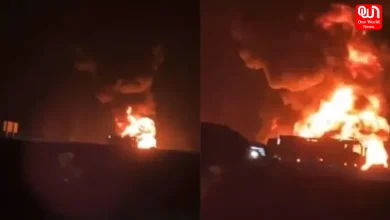Yamuna Pollution: We should learn from Britain’s Thames to clean the Yamuna in Delhi

Yamuna Pollution: CPCB finds the Yamuna Water getting into ‘critically worse’ condition
The recent analysis by the Central Pollution Control Board (CPCB) found a declining trend in the water quality of Yamuna River in Delhi in the last five years. Data collected by the Delhi Pollution Control Committee (DPCC) and the CPCB from 14 river monitoring locations showed expect from Surghat, ahead of the Wazirabad Barrage and Palla- from where the Yamuna enters Delhi. The water quality at all 14 locations failed to meet the several parameters of water quality from 2015 to 2019.
What did the analysis of monitoring committee say to NGT?
The monitoring committee that was set up for Yamuna rejuvenation submitted an analysis to National Green Tribunal this month. The Committee said that to improve the quality of water in the Yamuna river, we will need to stop the sewage and industrial waste discharge in the Yamuna from both UP and Haryana. In Haryana, about 500 million litres of sewage and waste are discharged every day in the river from several townships. In UP, about 65 million litres of sewage and waste are discharged at Ghaziabad. Also, the flow of sewage through Shahdara and Najafgarh drains and all other drains in Delhi need to be prepared.
Water that is drawn from the Yamuna for supply to the city is taken before the Wazirabad Barrage. After this, a 22-km stretch till Okhla is responsible for a major share of its pollution as there are many drains joining the river there.
After four locations below Palla, the Central Pollution Control Board found the minimum presence of faecal coliform, an indicator of sewage contamination, mostly exceeding 1 lakh MPN/100ml against the normal 500 MPN/100 or lower.
The river Yamuna is the largest tributary of River Ganga has been one of the most important and prominent rivers of India. Unfortunately, certain stretches of Yamuna are very polluted. Despite the efforts of Yamuna Action Plan Phase 1 and Phase 2, the river quality in the National Capital Territory remains in critically worse condition.
Read more: The Silent Killer: Plastic
Thames river was declared biologically dead by the Natural History Museum in 1957. A report found no oxygen for several miles above and below London Bridge. This happened because of wartime bombings that destroyed Victorian sewers that used to keep the river clean. But in the late 1960s, the London sewage system gradually improved after the country’s war recovery. In the 1970s and the 1980s tighter regulations were made against the pesticides and fertilizers that were washed in the river. Pollutions from toxic metals in the river have dropped since the early 2000s. Fishes that were gone after the war came back and currently there are 125 species of fish. Slowly, but Britain has established The Thames as a clean river now.
Prime Minister Narendra Modi promised to clean the holy river Ganga by 2019. The deadline has moved to 2022 now. Namami Gange project is slow and not running on time. Out of 23304 crores allotted for the project, only 5890 crores has been used so far. At least, we are making efforts to clean the holy river. We should also get serious about the cleaning Yamuna before the situation gets out of control. India also needs to learn from Britain in their efforts to clean the Thames river.
Have a news story, an interesting write-up or simply a suggestion? Write to us at info@oneworldnews.com







